The Main Event
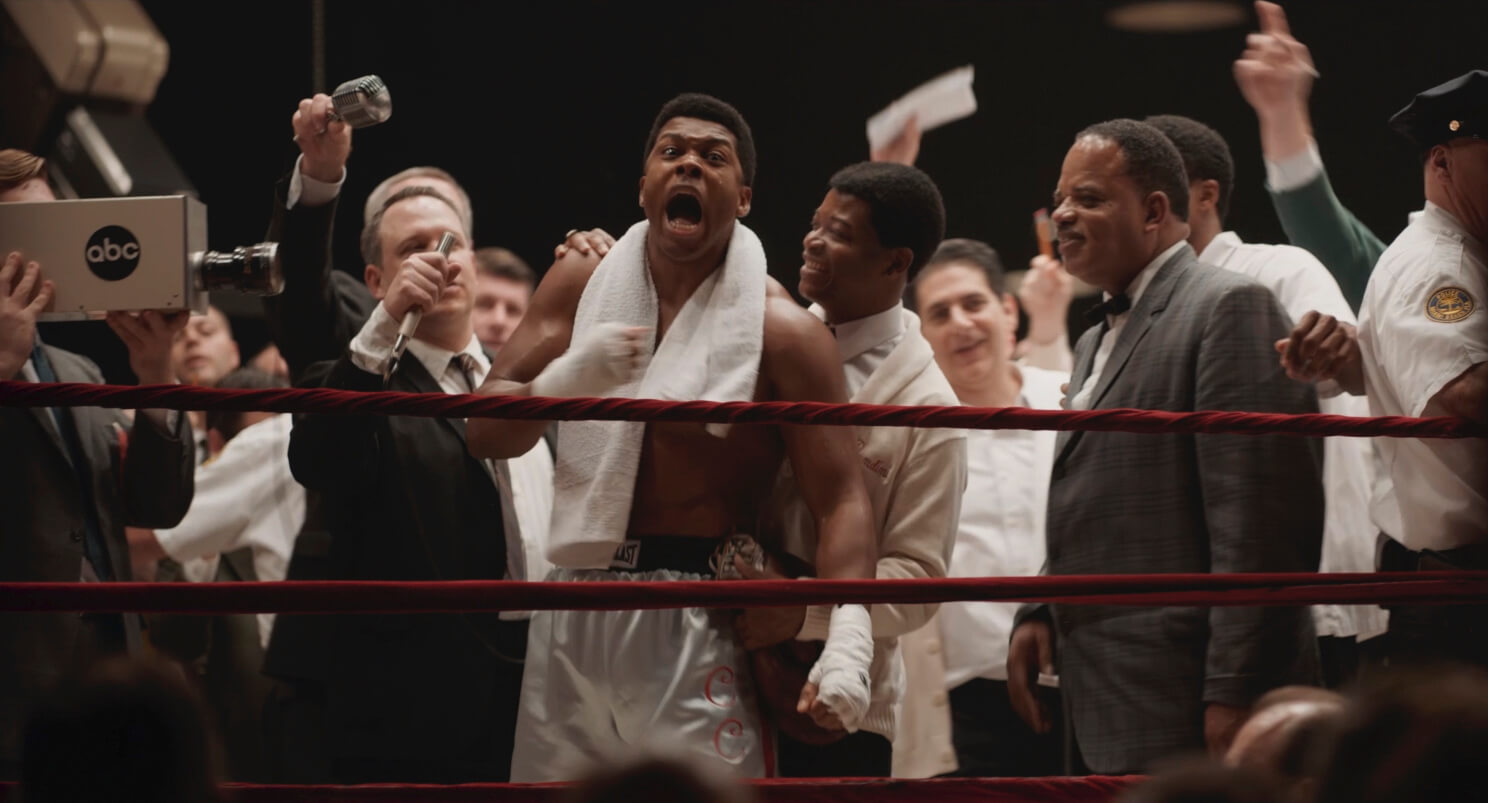
Tami Reiker, ASC and Light Iron supervising colorist Ian Vertovec detail their collaboration on director Regina King’s feature One Night in Miami…
On Feb. 25, 1964, Cassius Clay defeated Sonny Liston at the Convention Hall in Miami, Fla., to become boxing’s heavyweight champion of the world. Afterward, Clay — who would shortly change his name to Cassius X and later to Muhammad Ali — joined singer Sam Cooke, football star Jim Brown, and civil rights leader Malcolm X for a celebration in the latter’s room at the Hampton House motel. Written by Kemp Powers and based on his stage play of the same name, the feature One Night in Miami… explores the dialectic that might have ensued between the four men as they each stood at a personal crossroads within the larger context of the civil rights movement.
Starring Eli Goree as Cassius Clay, Leslie Odom Jr. as Sam Cooke, Aldis Hodge as Jim Brown, and Kingsley Ben-Adir as Malcolm X, the movie marks the feature-directing debut of Regina King, who partnered for the first time with cinematographer Tami Reiker, ASC. Reiker reports that the opportunity to collaborate with King came about “in a very normal way: The producers sent the script to my agent. I loved it, and I created a look book to present to Regina, and we had a great meeting. We had some of the same ideas about having a very rich and saturated film, with vibrant colors, and we dug right into how we could keep things moving when half of the movie takes place in a hotel room.”

To that end, the filmmakers strove to continually shift the story’s perspective among the four main characters. “We had these long scenes that would be 12 pages of solid dialogue — incredible dialogue, but not even a screen direction,” Reiker says. “We approached it by shooting long masters. We would shoot the entire scene from two floating jib arms in this very small hotel room, coming at it from different angles. And then we’d find these moments where, as we got tighter and tighter, we saw that we could shift the perspective or change the focus from one character to another.”
After shooting large format with Alexa 65 for director Gina Prince-Bythewood’s The Old Guard, Reiker again turned to the camera for One Night in Miami… “When I met with Regina and we started talking, I felt large format would be perfect because it was so often going to be all four characters in the frame, and we were going to use every inch of the frame.” The need to capture the four leads side-by-side also led the filmmakers to frame for the 2.39:1 aspect ratio.
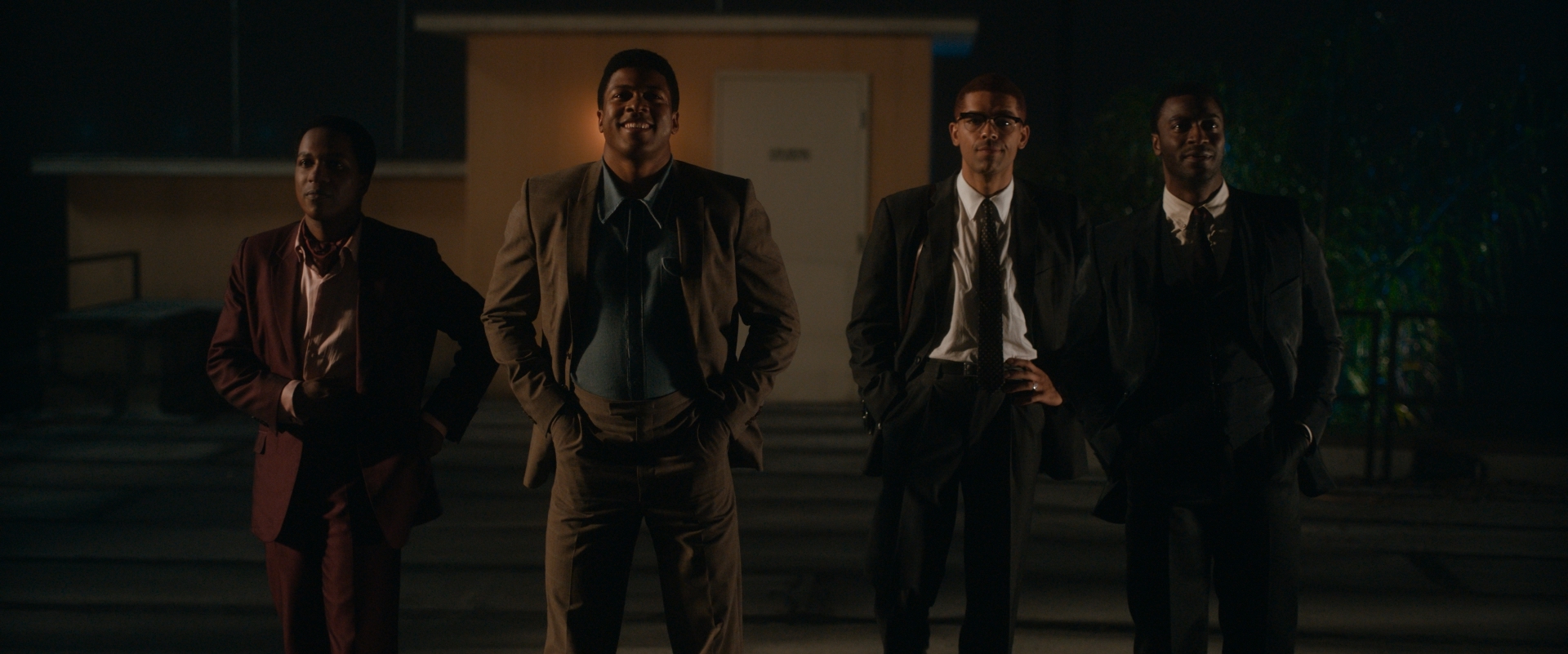
Reiker had approximately six weeks of prep, after which production commenced in New Orleans in January 2020. Principal photography then wrapped in late February, just before Covid-19 brought productions around the world to a temporary standstill.
Light Iron provided color-grading and finishing services, completing the project ahead of its early September premiere at the Venice Film Festival. The digital grade was performed by supervising colorist Ian Vertovec at Light Iron Los Angeles. Producers Keith Calder and Jess Wu Calder brought One Night in Miami… to Light Iron after having previously worked with Vertovec on the features Anomalisa, Blair Witch and Blindspotting.
This was Reiker and Vertovec’s first time working together, and to help them quickly align on the movie’s look, the cinematographer shared stills that digital imaging technician Tyler Blackwell had graded throughout production, after wrapping each day’s shoot. “I loved what we did on set,” the cinematographer says, “so that was our jumping-off point.”
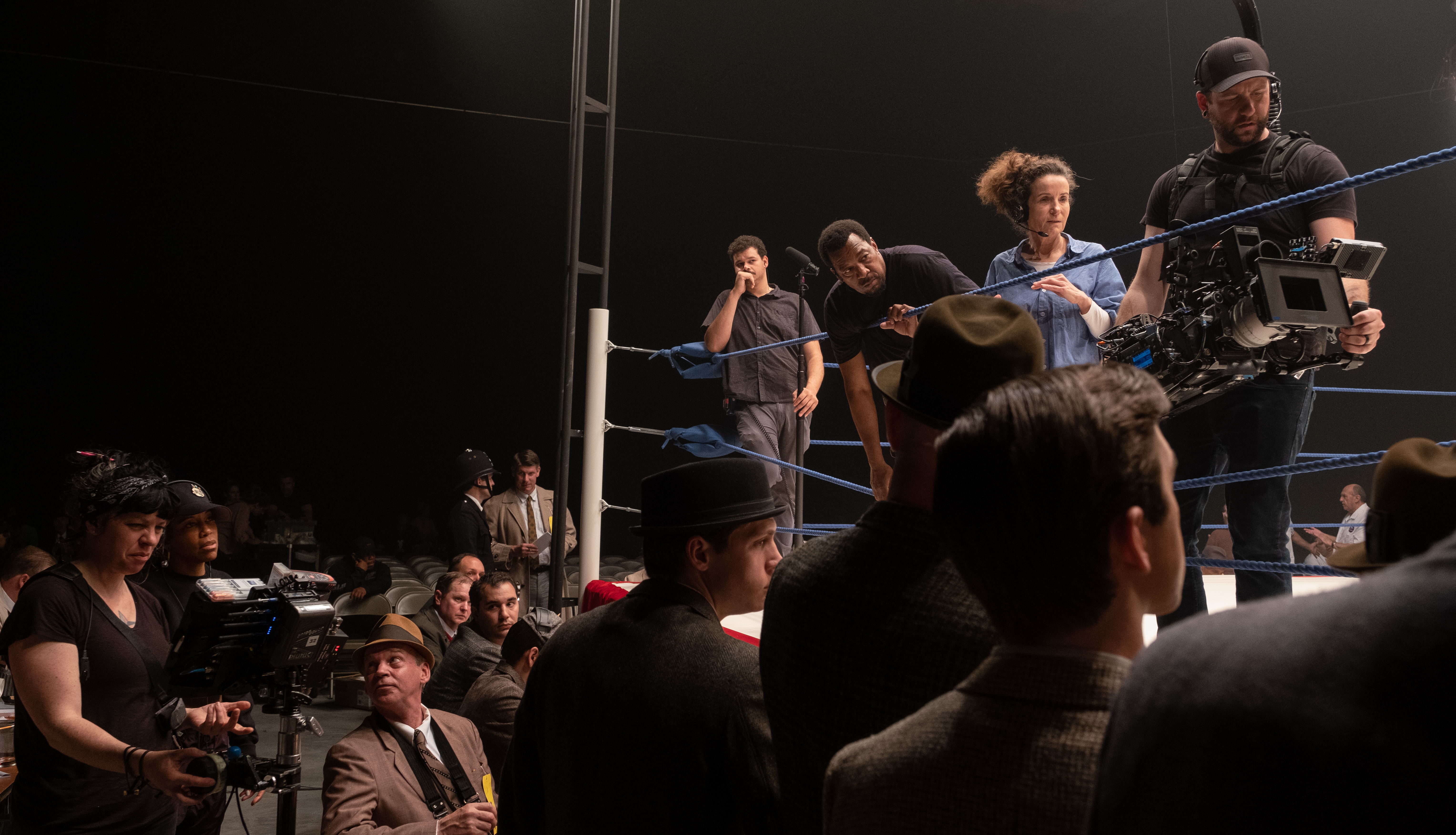
Working in Baselight, Vertovec shares, “I rebuilt the LUT Tami had in dailies so we would be able to deliver all the different versions for multiple platforms.” He describes the rebuilt LUT as being “based around getting the skin tones nice and rich, without too much red or too much green. Skin tones on the shadow side can often get ruddy, but we wanted more red in the mids, and then as it gets darker, we wanted it to get a little bit cleaner. Also, with highlights on skin tones, you sometimes get too much green, especially from yellowy lampshades or sconces. So we wanted to make sure we had a good balance of not too much green and not too much red, and for everything to render properly across all the different formats we had to deliver.”
Another important element of the LUT was the way it defined the roll-off through the shadows. “This film has a soft toe, where black is not all the way down,” Vertovec explains. “There’s contrast, but it doesn’t have a crunchy black level. When it’s softer like that, you actually get less noise in the shadows, so you can get very dark without it feeling like you can’t see anything. Everything can still be very clean. I think that was a good choice for a movie that takes place largely at night.”
During preproduction, Reiker and King had shared a wide swath of visual references, including real-life images of the four men. The filmmakers directly evoked a number of those references, for example with a striking shot of Clay standing underwater in a swimming pool, his fists raised in a boxing stance, posing for a now famous Life magazine photo taken by Flip Schulke. “It’s interesting,” Vertovec notes, “because a lot of those photos are black-and-white, like the shot of Cassius Clay underwater. So you recognize it as this famous photo, but now it’s beautifully in color. You actually see the blue of the water, with the sunlight coming into the pool.”
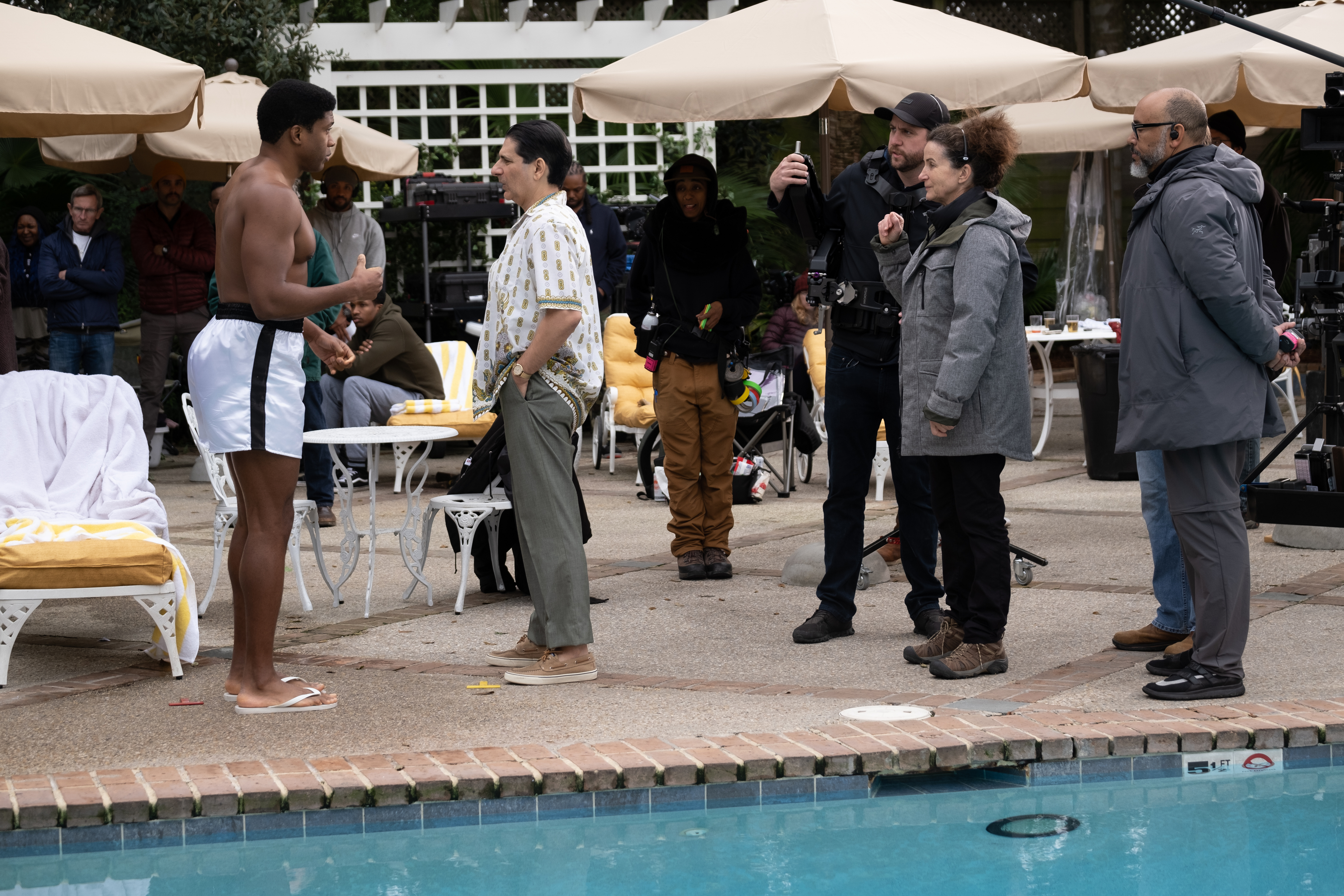
Following a prelude that introduces each of the four main characters at slightly earlier points in time, that shot of Clay underwater brings the story to the day of his bout with Liston. The shot also adds blue into the movie’s color palette, which was carefully controlled across Reiker’s lighting, production designer Barry Robison’s sets, and costume designer Francine Jamison-Tanchuck’s wardrobe. “We worked together very closely,” Reiker says. “We had a lot of meetings and a lot of sharing, which was so crucial. We never stopped talking.”
She adds that she and her collaborators worked with “vibrant blues and really warm interiors” to imbue the images with the feeling of the real Miami. The palette was also punctuated with pops of red, evidenced in Cooke’s sports car and Clay’s boxing gloves. When it came to the final color grade, Vertovec explains, the LUT served “to keep those colors under control so they could go to an HDR display and not feel electronic or digital or out of gamut.”
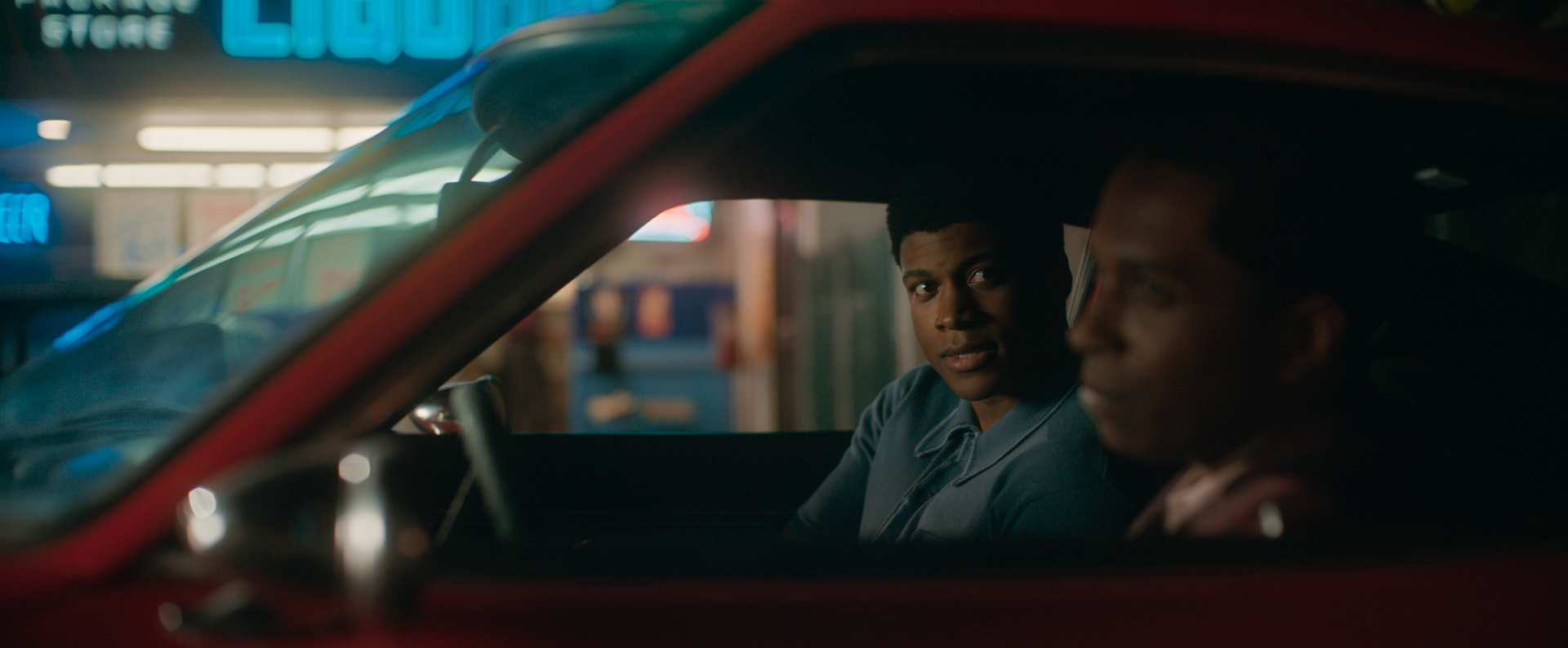
Reiker consistently used a Bronze Glimmerglass filter throughout the movie, in every scene, either a 1 or ½ depending on whether she was shooting with a wider or longer focal length, respectively. “The Glimmerglass really takes that video edge off, but it doesn’t make a soft image,” she explains. “It’s not like a Pro-Mist. It doesn’t feel like you put anything on there, but when Regina and I compared the image at the monitor with the Glimmer in and the Glimmer out, we were like, ‘Well, of course, it has to be in!’ It makes it feel richer, and the bronze looked beautiful on the skin tones.
“It did create some issues,” she adds. “The minute it flares, it just washes the whole image. We had to be really careful with that. We were constantly using eyebrows and hard mattes and taping right up to the edge. But it was worth it!”
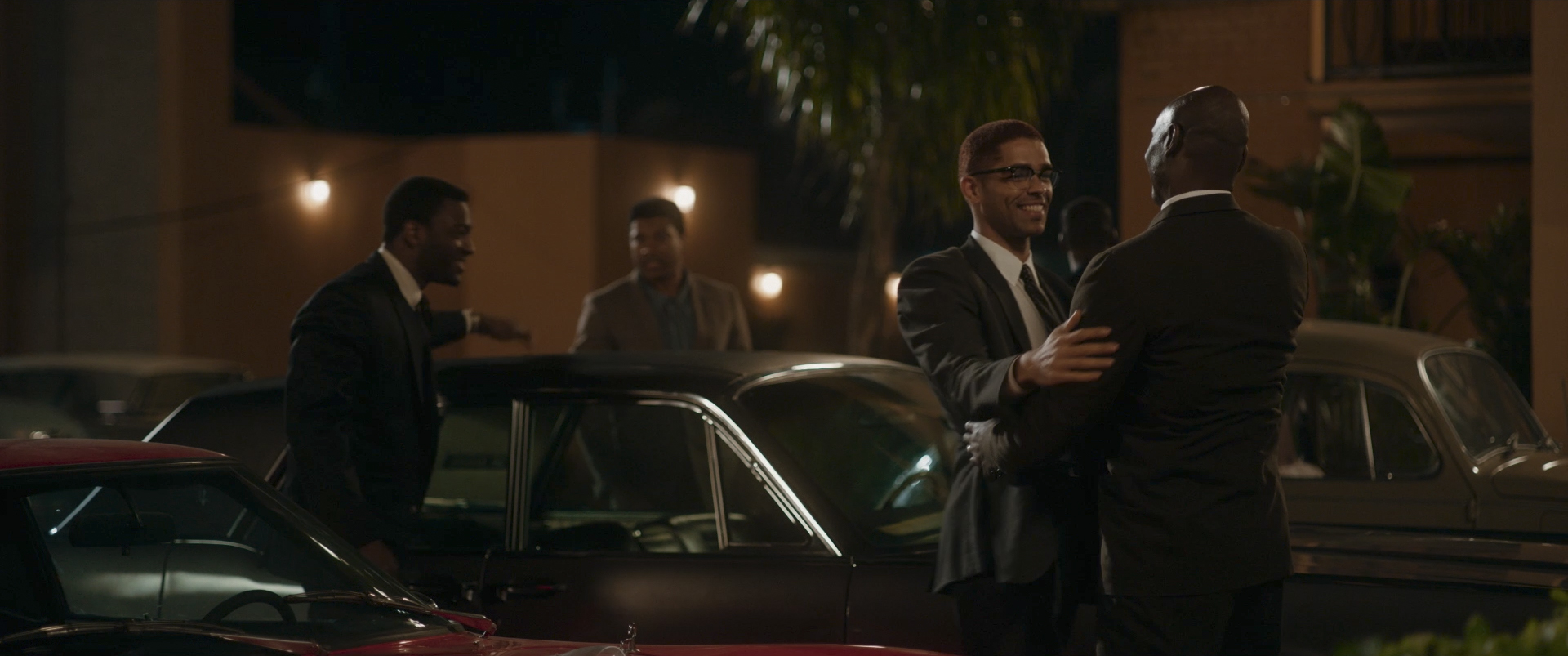
When viewed in the DI, Vertovec says, the on-camera filtration “informed how we wanted specular lights to look, the way streetlights would bloom in the background, all of that.” The filmmakers further finessed the images’ texture through various diffusion and sharpening tools available in the grade.
Throughout the movie, the white point often tips to the warm side of the scale. The filmmakers took care, however, to ensure that certain elements, such as the white on Clay’s boxing trunks, remained crisp and clean. “The fight scenes skewed a little bit more towards the magenta warmth as opposed to the more yellow warmth of the rest of the film,” Vertovec explains. “We wanted to make sure the mat of the boxing ring had a nice, aged quality to it and wasn’t too bright or dark. There was also an effort to make sure the flashes from the camera didn’t feel overwhelmingly yellow or blue.”
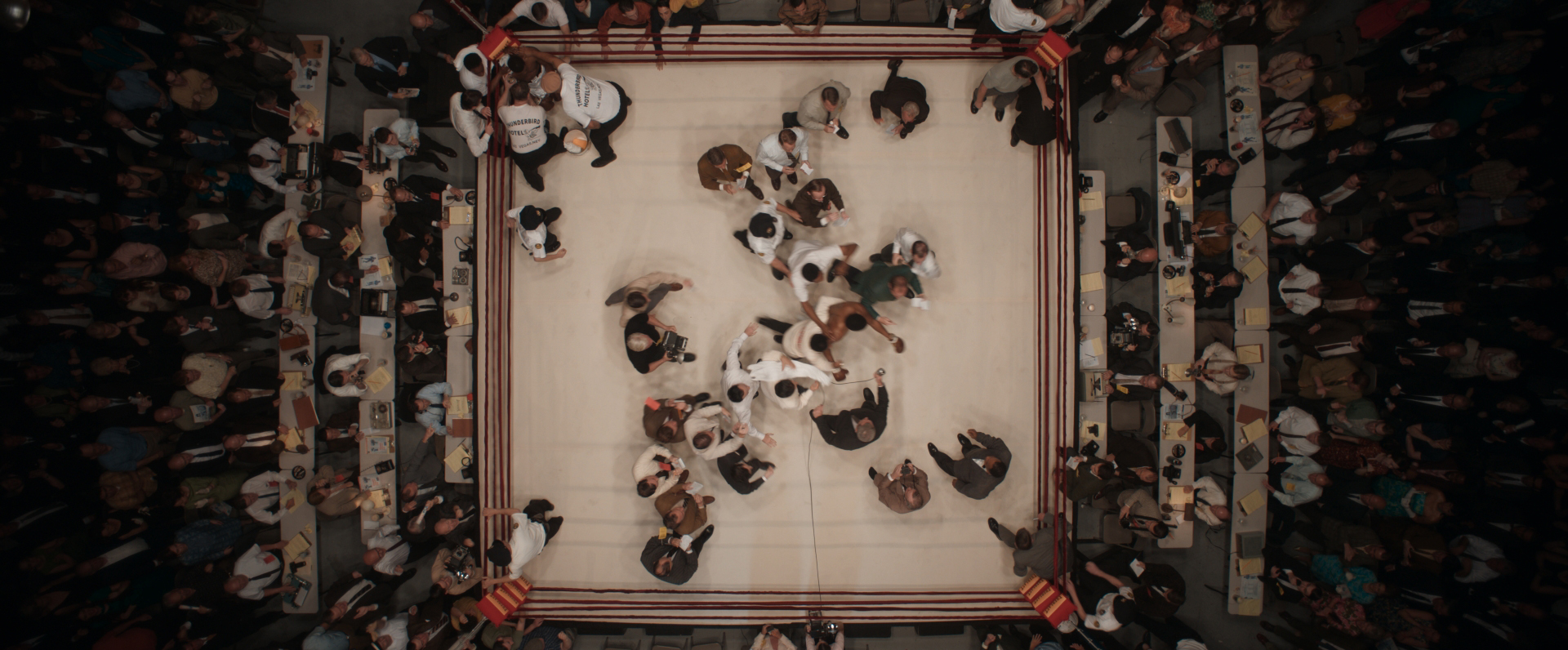
To realize such intentions, Vertovec first turns to the white-balance control, which offers color temperature and tint adjustments. “I attempt to achieve as much as possible with that tool because it’s the most natural looking,” he says. “The end result looks like it was shot that way, and that’s the goal with color correction.
“If I get the skin tones exactly where we want them but maybe there’s a CGI camera flash that’s a different color than the practical flashes, then I can go in, do some key-framing, and isolate that highlight to bring it in line with the others,” he continues.
In addition to Clay’s historic fight with Liston, One Night in Miami… depicts an earlier bout in which Clay fought Henry Cooper in London’s Wembley Stadium in 1963. Although they take place on different continents, both matches were shot on the same stage at New Orleans’ Second Line Stages. During prep, Reiker recalls, “Regina and I watched a lot of boxing films together. As much as we love Raging Bull, we did not want our scenes just going to black. We wanted to feel the audience. I created little pinpoints of light so it felt like it kept going, and then visual effects did an incredible job with the extensions.”
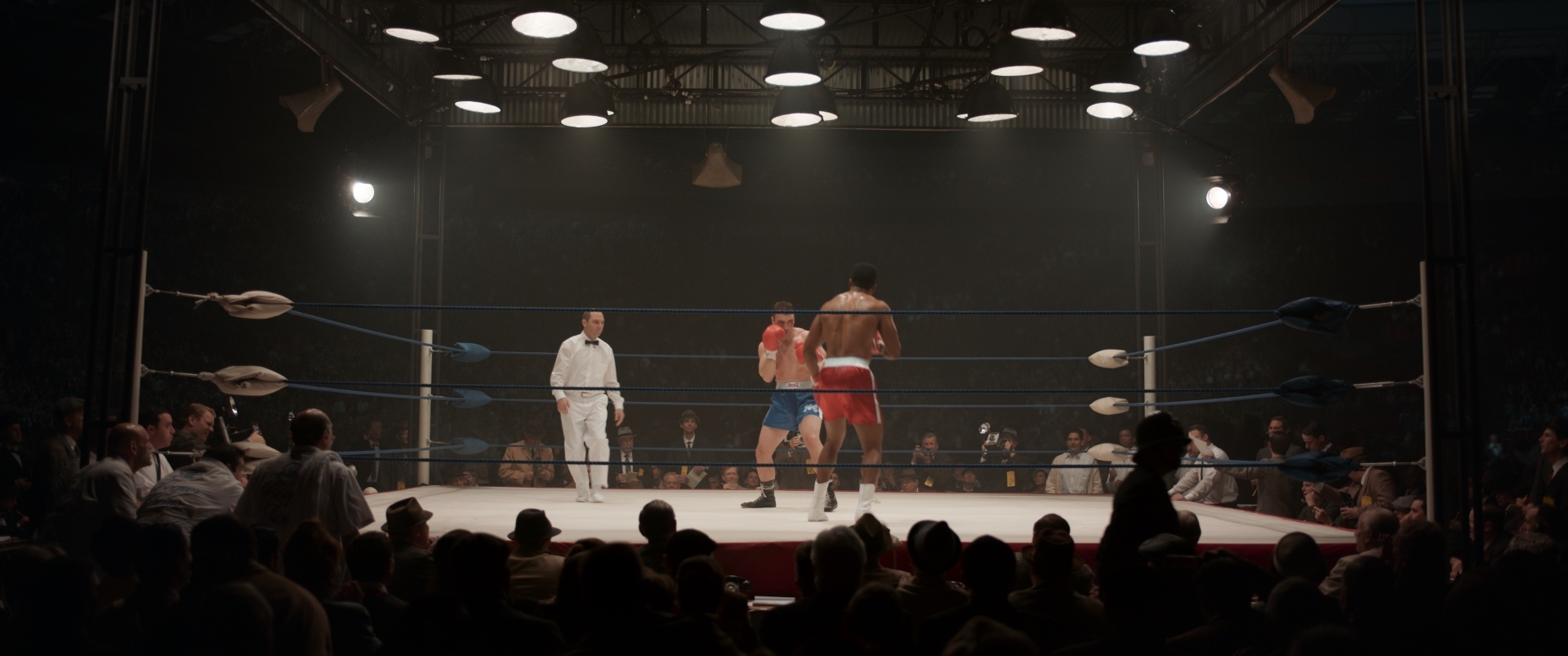
Once the characters settle into Malcolm X’s hotel room following Clay’s victory over Liston, a chief objective for the filmmakers was to preserve a feeling of continuity with the lighting as the actors move around. “We were lighting these four men in such a tiny space,” Reiker reflects, “and we were doing everything we could to keep the light off the walls — but then someone would go into a dark corner, and I’d be like, ‘No!’ But Ian was a genius at following the actors across the room, keeping them balanced, and taking down the walls. He’s a wonderful collaborator.”
In the DI, Vertovec explains, he and Reiker worked together “to sculpt the lighting so it would feel continuous but also interesting. For example, in one scene, a character might be near a wall that was relatively bright, and then in a later scene, we see the wall in the background, and it’s dark. It was a balancing act between having the light be perfect for the actors and making it feel consistent throughout the movie — which is not exactly real time, but it’s a very short amount of time, so we couldn’t have too much discontinuity. It was about making the viewer think they’re watching something continuous.”
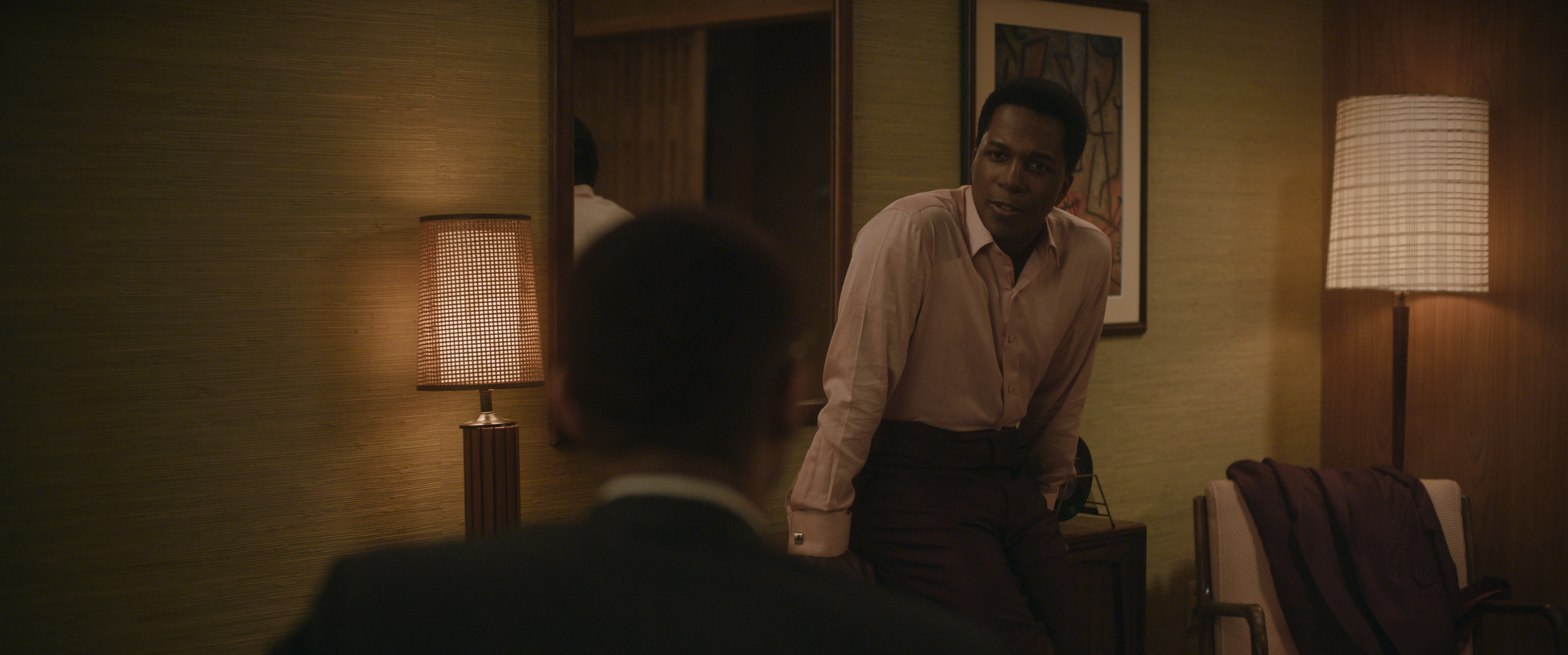
Vignetting proved to be a key tool for fine-tuning that continuity, allowing the filmmakers to bring down the illumination on the brighter-looking walls and keep the focus on the characters. “A vignette feels like an optical trick,” Vertovec shares, “so it’s much more forgiving than roto’ing people out to bring the wall down behind them.”
The two-week DI included passes for the theatrical version (in P3 color space) as well as HDR (ST. 2084 PQ) and SDR (Rec. 709) streaming versions, with the theatrical completed first and serving as the reference the subsequent iterations were meant to match. “It was really about maintaining a consistent viewing experience,” Vertovec says of the multiple deliverables. Regarding the HDR, he adds, “With a movie that largely takes place at night, you have a lot of opportunity for background lights to have some real life and different colors, which is always fun. And we could make the camera flashes during the boxing feel like a real camera just went off, creating more volume and a livelier image than is possible on a theatrical projection. That’s the best-case scenario for HDR, that it feels more immersive.”
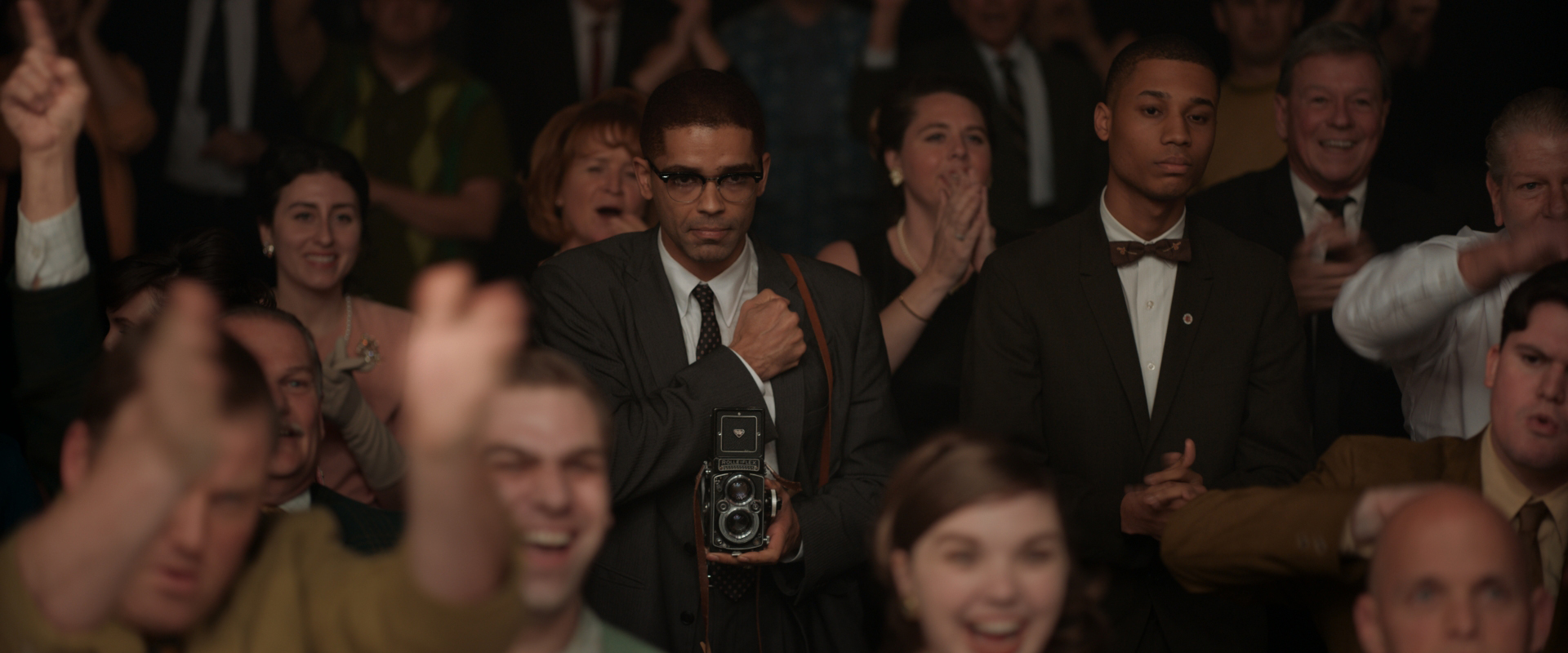
Finishing the feature during the pandemic, Vertovec worked in one grading theater inside Light Iron Los Angeles while King, Reiker, and the producers sat in a separate theater in the same facility, watching a live feed of Vertovec’s grade while communicating with the colorist via Google Meet on an iPad. Laughing, Reiker recalls, “He was like the Wizard of Oz! I absolutely loved working at Light Iron with Ian.”
The filmmakers also took advantage of Light Iron’s remote capabilities to securely stream the grade from the facility to the visual-effects teams for synchronous review sessions while King and Reiker were in the grading theater. “The visual effects were done all over the world,” the cinematographer notes, “and we’d have sessions where we’d tap them in remotely. Everyone could be watching the same thing at the same time as we were discussing it.”
“It was very efficient,” Vertovec observes. “It’s so much faster if the VFX people are able to stay at their workstations. As soon as they turn off the stream, they’re working — they don’t have to get in their cars and drive back to the office. It worked out really well.”
Since its festival debut at Venice and its subsequent streaming premiere on Prime Video, One Night in Miami… has garnered consistent praise for its vibrant talent both in front of and behind the camera. “The conversation that takes place between these great men in this movie is as important now as it’s ever been,” Reiker says. “It was an honor to work with Regina King and Kemp Powers on this film.”
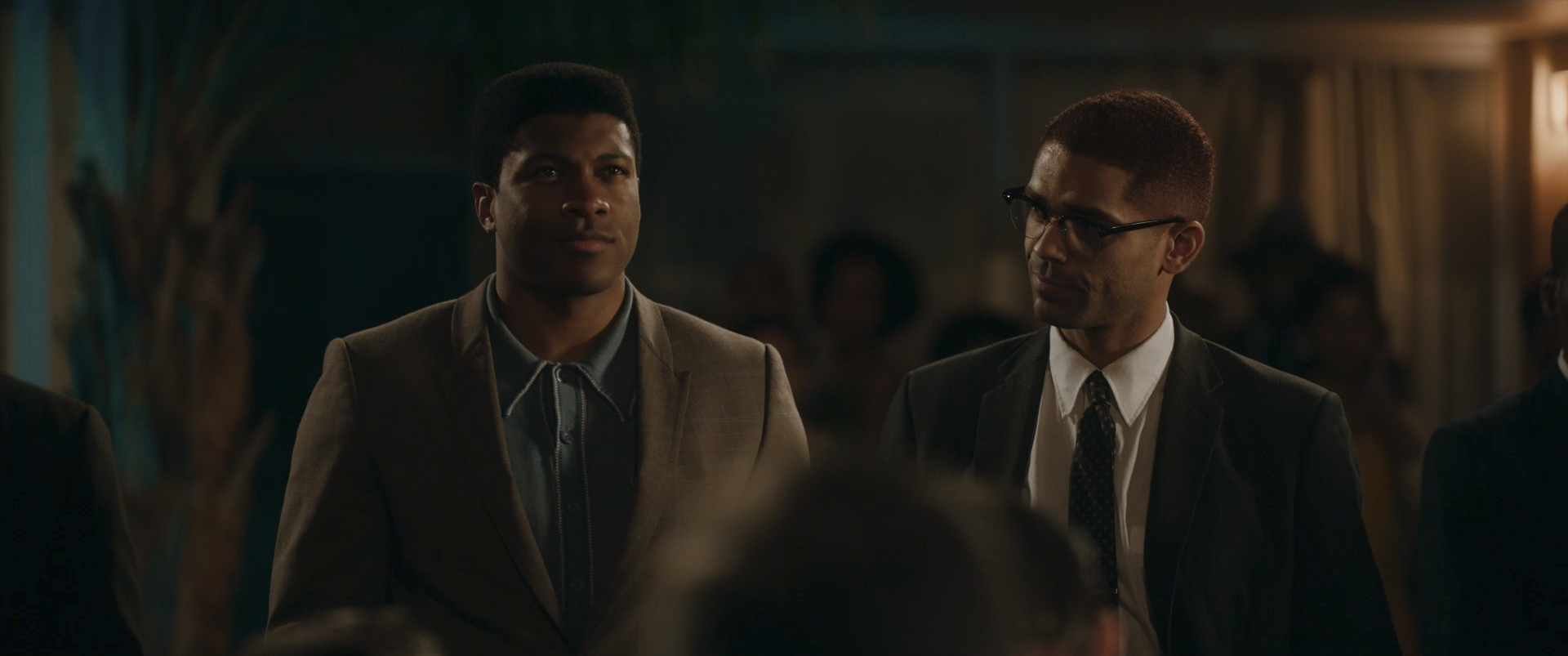
Unit photography by Patti Perret. All images courtesy of Amazon Studios.